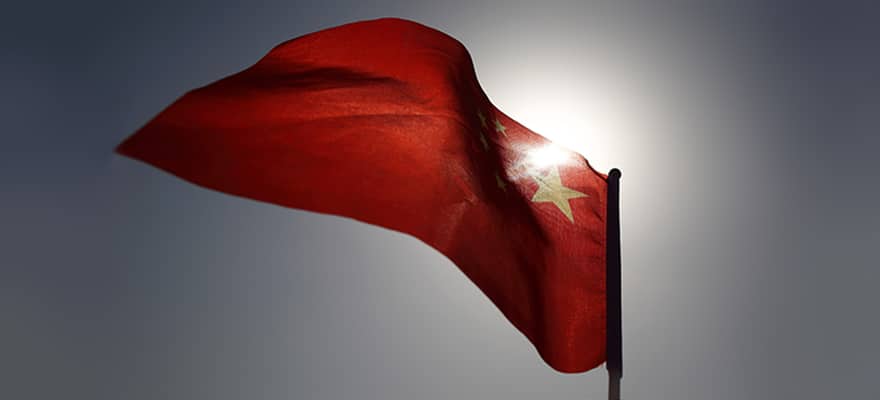The first addition of a new currency to the International Monetary Fund’s (IMF), Special Drawing Rights (SDR) basket in 35 years is now behind us and the effects of the decision on the currency market could be rather substantial. But will it mean a change in the habits of foreign exchange retail traders and do brokers need to start paving the way for the rise of Chinese yuan trading?
As with all risk events that are priced into the market, the market itself responds with a big yawn. What could be more curious to know is how current major currencies were impacted and are likely to be impacted going forward.
The big announcement has left few surprised, as the inclusion of the Chinese yuan itself was very much expected. The unexpected part for some, was the unshakable position of the U.S. dollar when it comes to the proportions of currencies included in the SDR basket. Looking at the shares of different currencies within it, we see a major shift of influence.
Looking at the U.S. dollar, its proportion has dropped a meager 0.17 percent to 41.73 percent of the total. Despite some conspiracy theorists chattering about the beginning of the end of the U.S. dollar’s dominance as a reserve currency, if we are to look into the list of currencies that actually got affected by the inclusion of the Chinese yuan into the SDR basket, we’d rather turn our heads to Europe and Asia.
The Declining Influence of Europe in the IMF
The sovereign debt crisis in Europe has left its mark on the euro. The share of the single European currency has declined from 37.4 percent to 30.93 percent, which marks a decline of almost 6.5 percent for the weight of the currency in the SDR basket. The British pound’s share has also declined substantially by 3.21 percent to 8.09 percent.
Looking at a regional level, if there were any doubts about the drop of the influence of Japan in Asia, they have been swayed by the fact that the Japanese yen’s share has dropped to 8.33 percent. The number is lower by almost 1 percent from its previous weight and lower by 2.6 percent from the Chinese yuan’s share of 10.92 percent.
Market chatter on the Chinese Yuan's Future
The Renminbi currency’s inclusion into the SDR basket is set for the beginning of October next year, but the impact of the move could be felt by the financial markets, global trade and geopolitics over the next decade.
The Head of Asia Currency Strategy at Societe Generale, Jason Daw, highlighted the main theme on the market, “Any positive reaction on yuan’s inclusion into the IMF reserves is likely to be short-term, given that the outcome is well priced in.”
And the market moves on the next day have confirmed the notion expressed above. The currency markets reacted with a big yawn, with the implications of the move only likely to be felt in the coming quarters if not years.
Looking at the market dynamics, the Chinese yuan is still not a free floating currency and increased dynamics in the price movement of the Chinese yuan is not going to materialize before capital controls are removed and the Chinese yuan is free-floated.
While some central banks might be required to hold a bigger portion of their reserves in Chinese yuan, this process is likely to be gradual and would only happen for countries that have big trade exposure to the currency. This means that the reserve managers who are looking to purchase the Chinese currency are mostly Asian countries as the Chinese yuan is not used much for Payments outside of the region.
HSBC’s analysts have outlined, “Market players will want to see more Volatility in the currency eventually; hence, inclusion in SDR doesn’t necessary mean that the RMB will be stronger.”
PBOC Doesn't Need Volatility and a Free Floating Yuan... Yet
Meanwhile the People’s Bank of China (PBOC) has hinted that it does not intend to loosen its grip on the currency in the coming future.
In a statement, the Head of the State Administration of Foreign Exchange and Vice Governor of the PBOC, Yi Gang, said, “There is no need to worry about yuan depreciation after its inclusion into the SDR basket. There is no basis for depreciation because of China’s rate of growth, big trade surplus and continuous increase in foreign direct investment (FDI).”
For the Chinese government, the ultimate goal is to make the currency free floating. Mr. Yi Gang, added, “During the transition from a managed float to a clean float, China will take a gradual and prudent approach.”
To sum up, the Chinese government’s resolve to provide disincentives for currency speculators is not likely to end in the near future. We would need to see many more changes in China in order for the Renminbi to become a heavyweight on the currency markets like the U.S. dollar, the euro, the Japanese yen.
For now, it's not even close to the antipodean currencies - the Australian, New Zealand and Canadian dollars.






















